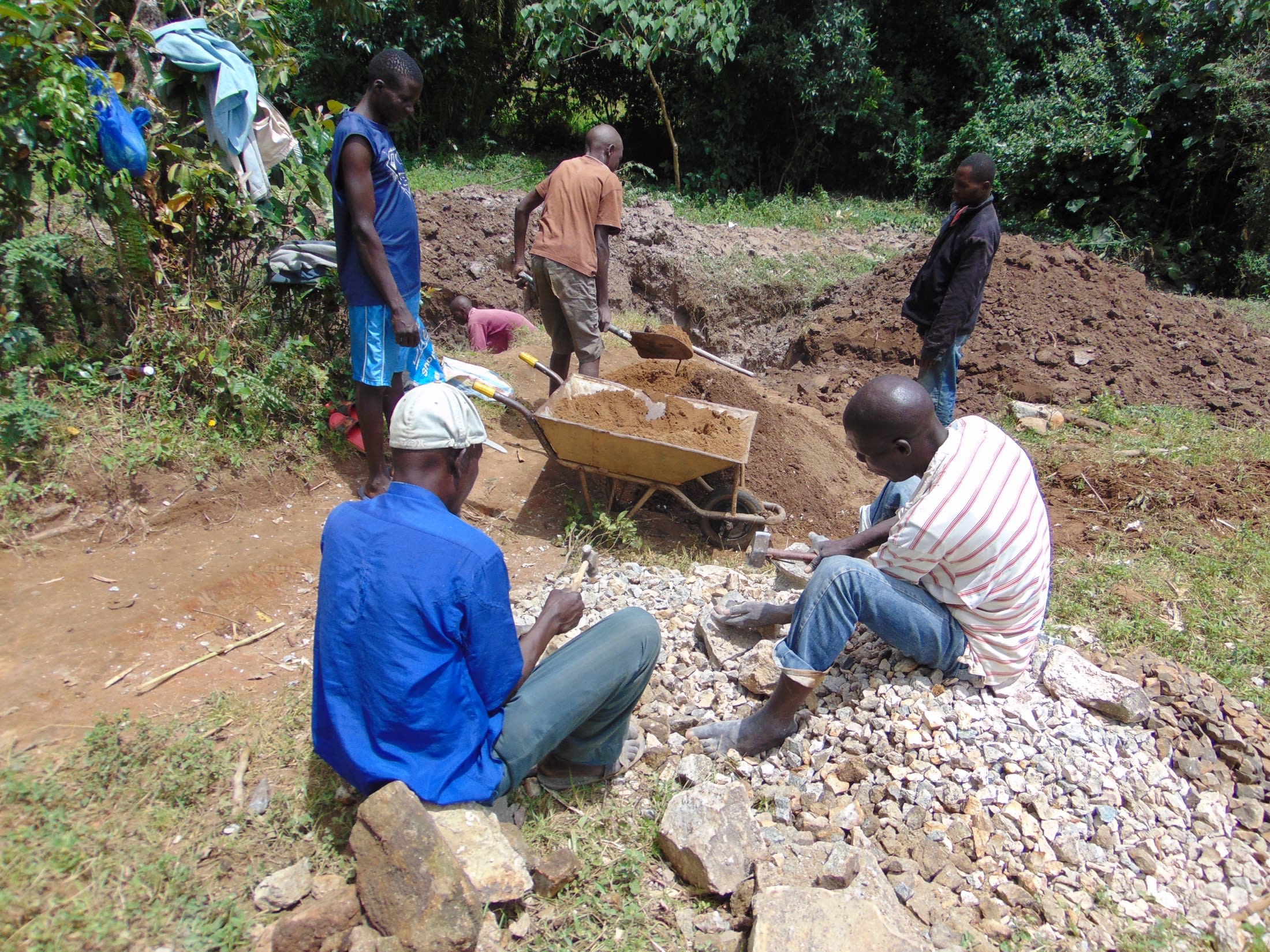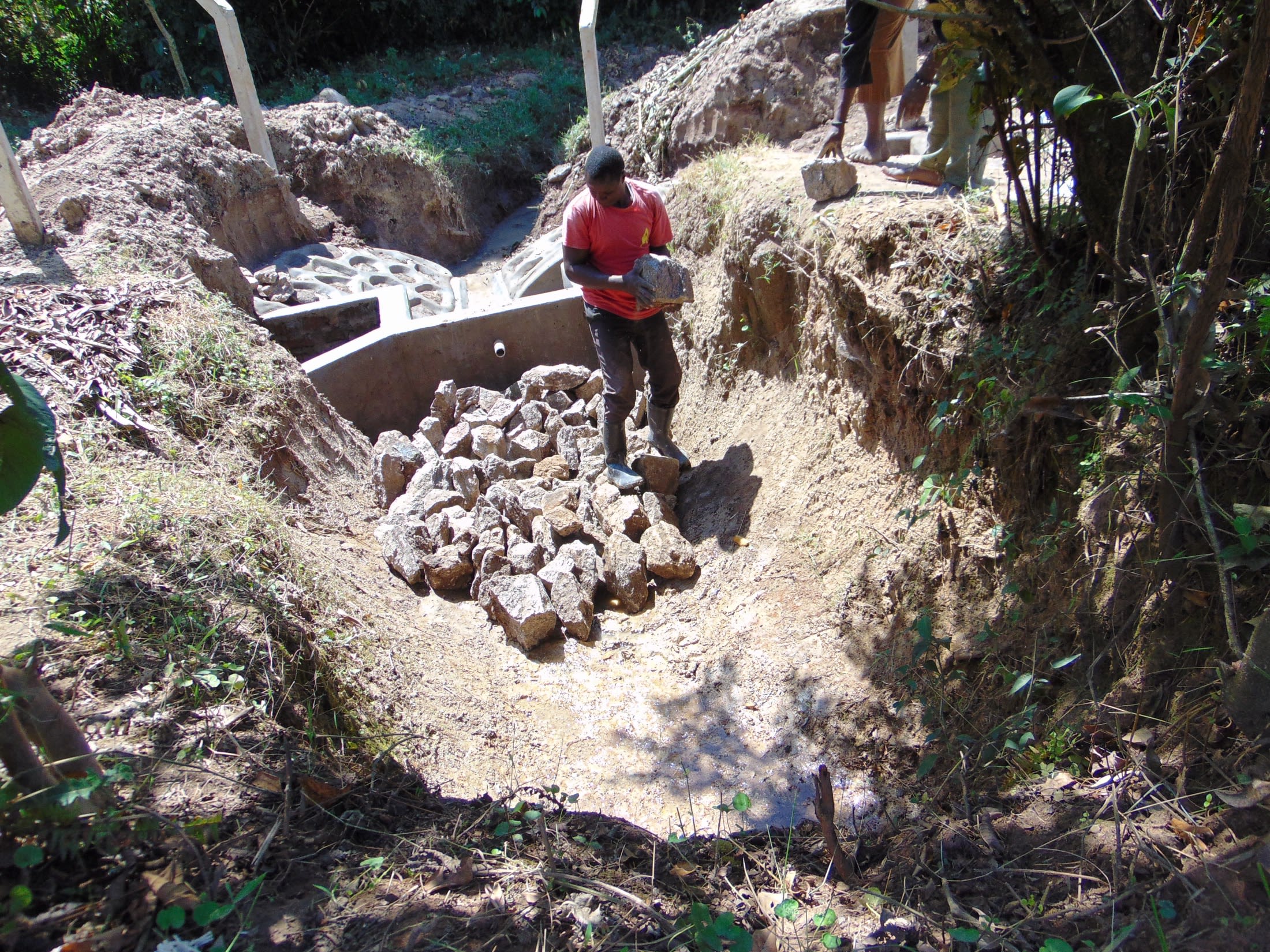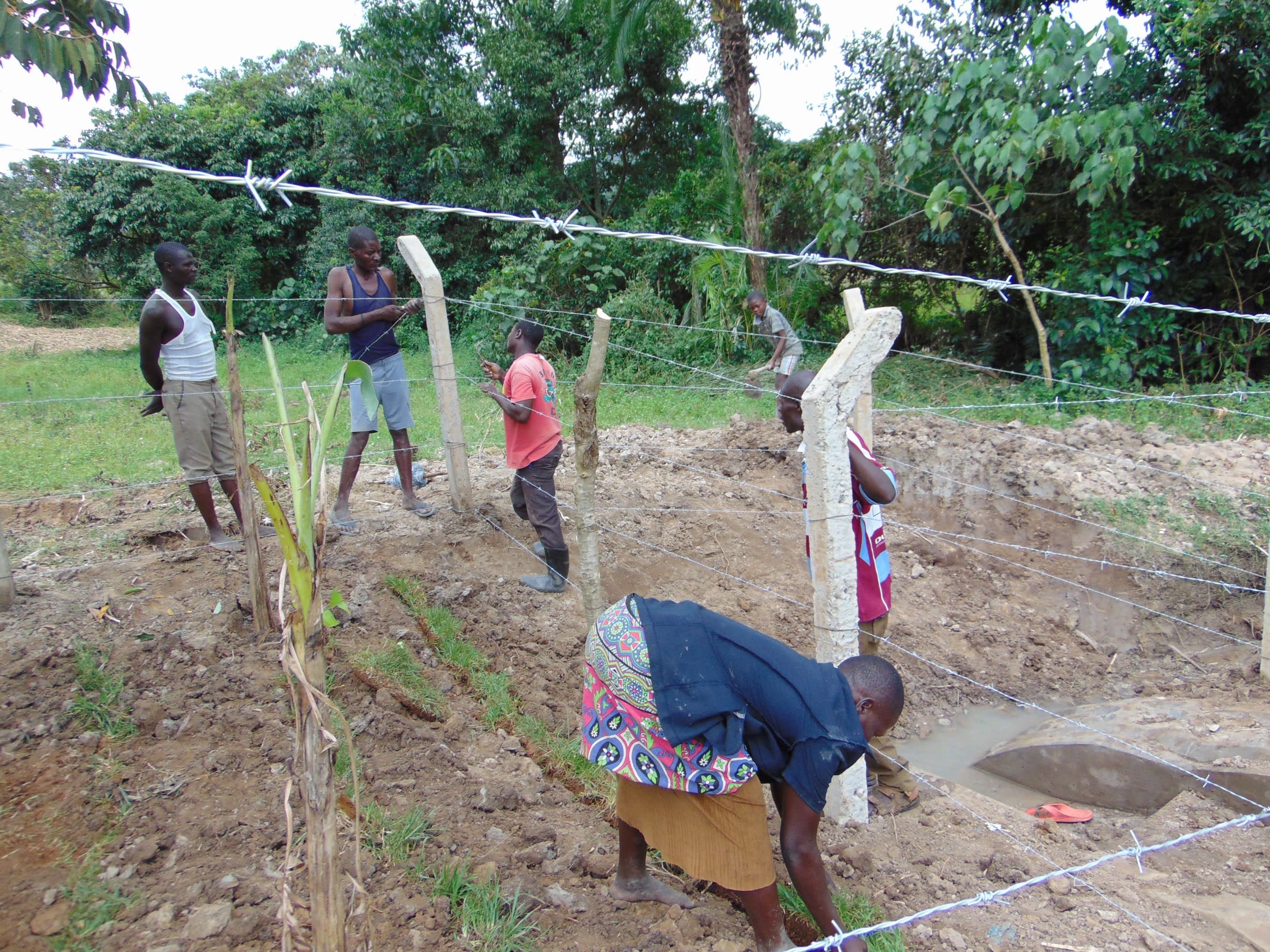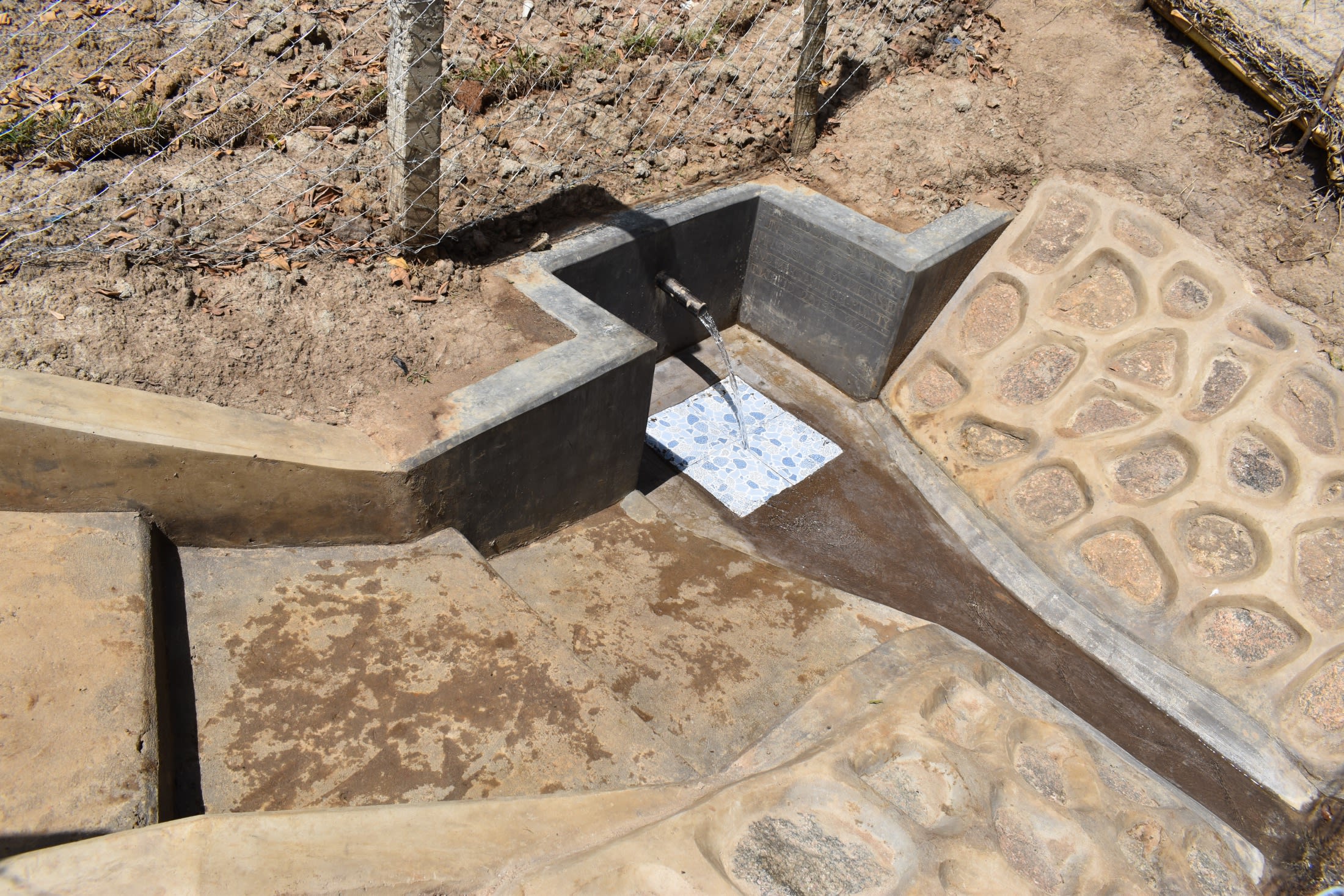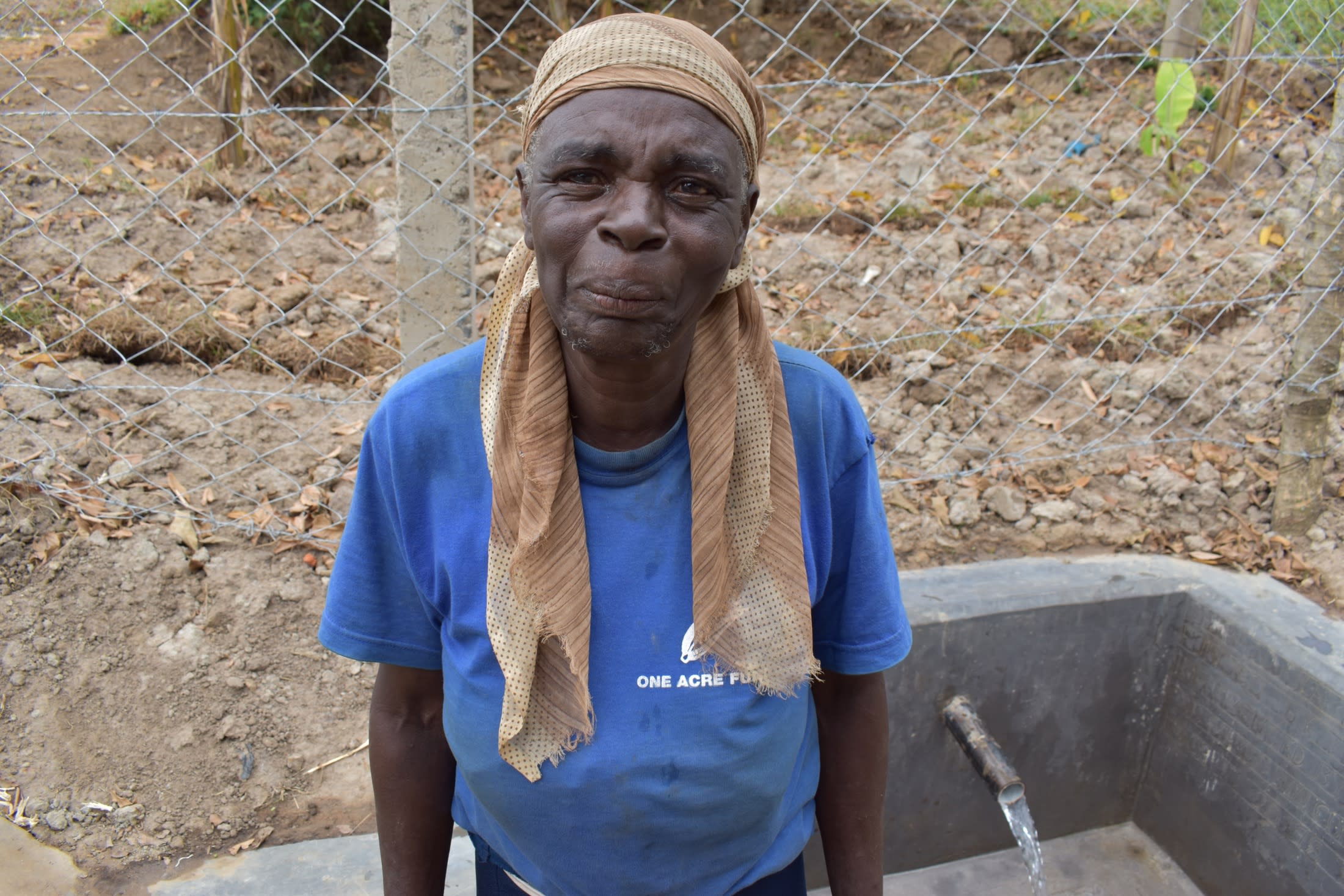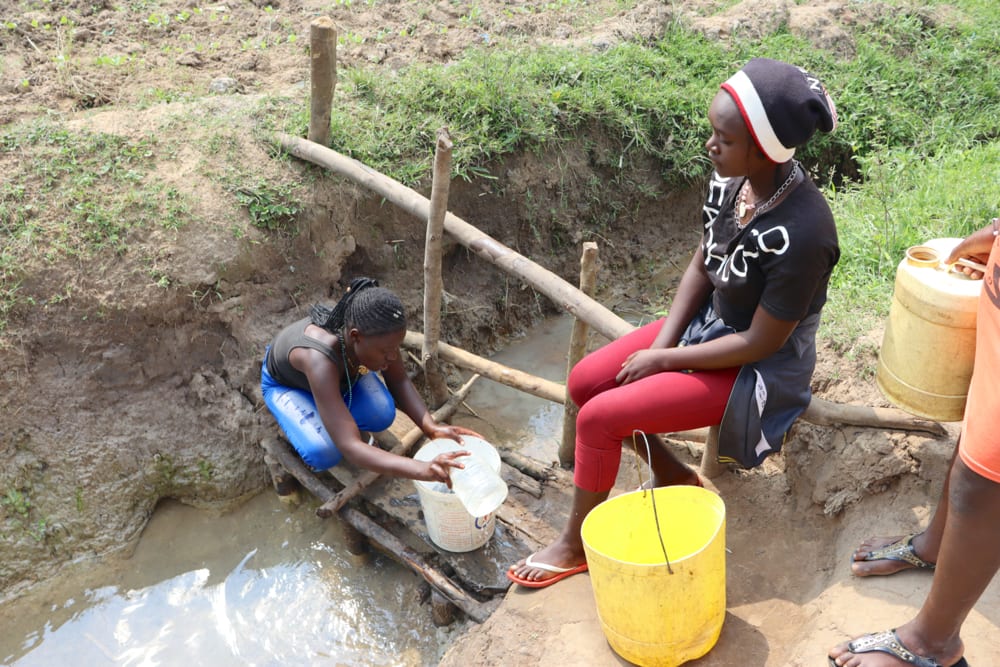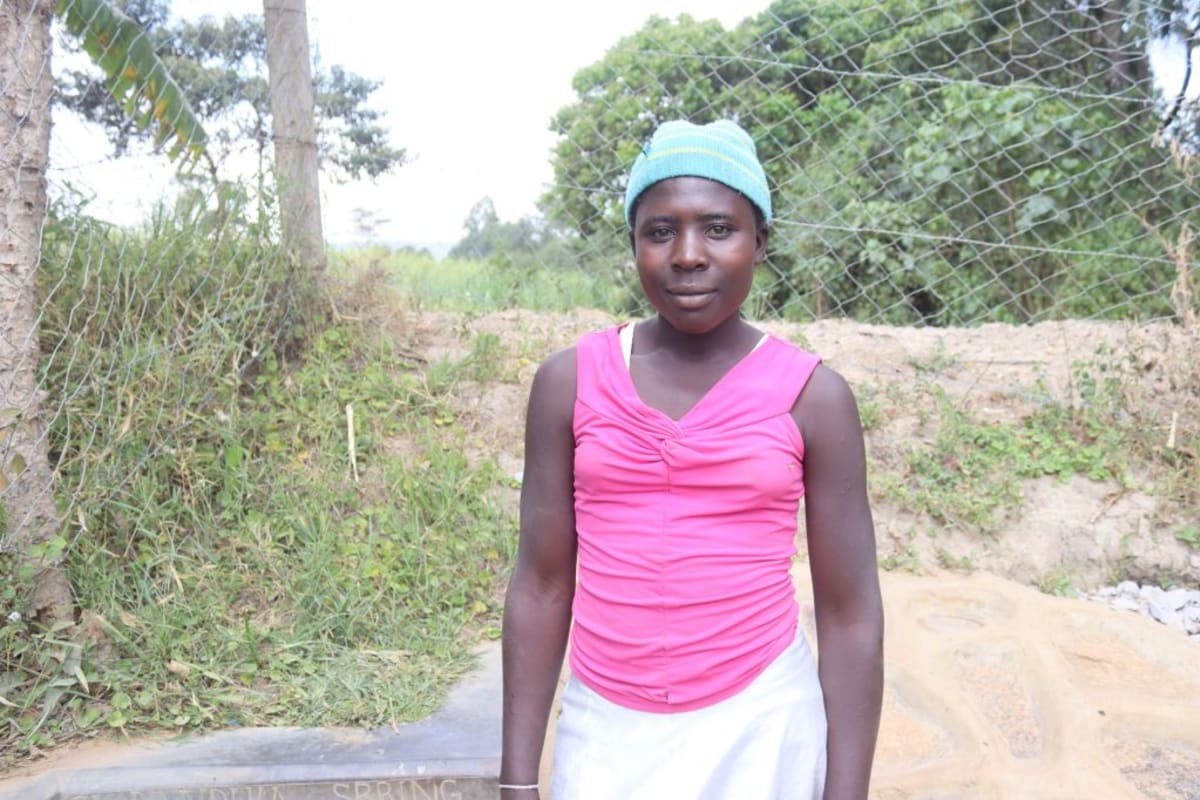"This water is helping us a lot in many things; unfortunately, for drinking, it is not good at all," said teenager Njeri of Shirandula Spring.
Njeri lives in Makhwabuye where she is 1 of 210 people in her community who relies on Shirandula Spring as the closest and only year-round water source. But in its unprotected state, the spring water is open to many different sources of contamination and it is difficult to access.
The environment in and around the spring is not hygienic. The spring collection area looks like a large puddle in a muddy trench several feet below the rest of the surrounding land. From where the spring water comes to the ground's surface to the area people collect it, the water is filled with algae, moss, rotting dead leaves, mud, and insects. Runoff from the rains carries farm chemicals, residues from animal waste, and soil directly into the water.
To fetch water, people must submerge their entire jerrycan or small jugs to then pour into the larger containers to fill them up. This action further contaminates the water by bringing any dirt and bacteria that were on their hands and jerrycans into the water they fetch.
If people scoop the water too quickly, or if people try to fetch water too closely back to back, they stir up the mud and other debris at the bottom of the pooled water into their jerrycans. This results in both dirtier water and long lines that waste people's productive time while waiting for a turn to fetch water.
Community members report a high rate of waterborne and water-related illnesses among families who depend on Shirandula Spring. The most common diseases include typhoid, diarrhea, and cholera, in addition to stomachaches most commonly reported among children.
"I have suffered for a long period of time with my child who has been sickly of stomach pains. When she came back from hospital, she was diagnosed with dysentery which drained us financially and also drained her health," explained Milton Shirandula, a farmer and father in the community. He is also the spring's landowner.
Water-related illnesses are costly to treat. Financial instability is therefore a major side effect of consuming the dirty spring water as people must spend the daily money they earn from their casual labor jobs on medication and hospital visits. Those who can afford medical treatment are considered lucky; many cannot and risk their health and their lives while their illnesses drag out. Even with medicine, sometimes people lose weeks to being sick.
When community members contract water-related illnesses, it takes them away from their daily activities. For adults, that means less productive time and less income-earning time. For children, that means staying home from school and often falling behind their classmates.
"Since I was diagnosed with typhoid, I stopped drinking [the spring water] because it cost me my studies. I was on and off at school and this really made me drop [in performance]," recalled Njeri, who is a secondary school student.
Accessibility is the other major concern at the spring. To reach the pooled spring water, community members built a small wooden bridge over the trench full of water. To get on and off the bridge, they also dug stairs into the earth to help ease the transition. Both the bridge and stairs become slippery as water inevitably splashes on them with each person that fetches water.
Because the water level changes depending on the rains, the bridge is sometimes quite high over the water. This forces community members to squat and reach far down for the water. For the elderly, young children, and women who are pregnant, this particular feat often makes the task impossible for them.
What We Can Do:
Spring Protection
Protecting the spring will help provide access to cleaner and safer water and reduce the time people have to spend to fetch it. Construction will keep surface runoff and other contaminants out of the water. With the community’s high involvement in the process, there should be a good sense of responsibility and ownership for the new clean water source.
Fetching water is a task predominantly carried out by women and young girls. Protecting the spring and offering training and support will, therefore, help empower the female members of the community by freeing up more of their time and energy to engage and invest in income-generating activities and their education.
Training on Health, Hygiene, COVID-19, and More
To hold trainings during the pandemic, we work closely with both community leaders and the local government to approve small groups to attend training. We ask community leaders to invite a select yet representative group of people to attend training who will then act as ambassadors to the rest of the community to share what they learn. We also communicate our expectations of physical distancing and wearing masks for all who choose to attend.
The training will focus on improved hygiene, health, and sanitation habits in this community. We will also have a dedicated session on COVID-19 symptoms, transmission routes, and prevention best practices.
With the community’s input, we will identify key leverage points where they can alter their practices at the personal, household, and community levels to affect change. This training will help to ensure participants have the knowledge they need about healthy practices and their importance to make the most of their water point as soon as water is flowing.
Our team of facilitators will use a variety of methods to train community members. Some of these methods include participatory hygiene and sanitation transformation, asset-based community development, group discussions, handouts, and demonstrations at the spring.
One of the most important issues we plan to cover is the handling, storage, and treatment of water. Having a clean water source will be extremely helpful, but it is useless if water gets contaminated by the time it is consumed. We and the community strongly believe that all of these components will work together to improve living standards here, which will help to unlock the potential for these community members to live better, healthier lives.
We will then conduct a small series of follow-up trainings before transitioning to our regularly scheduled support visits throughout the year.
Training will result in the formation of a water user committee, elected by their peers, that will oversee the operations and maintenance of the spring. The committee will enforce proper behavior around the spring and delegate tasks that will help preserve the site, such as building a fence and digging proper drainage channels. The fence will keep out destructive animals and unwanted waste, and the drainage will keep the area’s mosquito population at a minimum.

 Protected Spring
Protected Spring
 Rehabilitation Project
Rehabilitation Project













